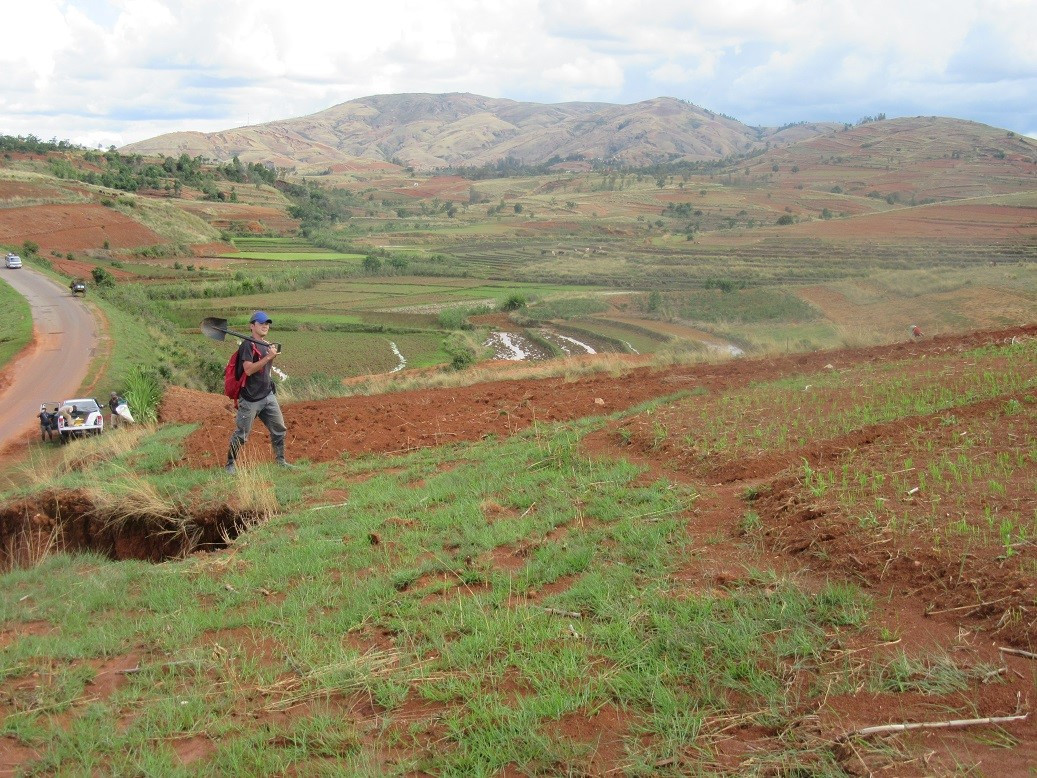Pick Up
354. When Soil Changes, Fertilizer Effectiveness Also Changes ― Towards Fine-tuning of Fertilizer Management―

Fertilizer is an expensive commodity for many farmers in developing regions such as Africa, and applying fertilizers can lead to economic losses if it is not expected to increase yield sufficiently.
Since the soil properties in the region vary greatly even between adjacent fields (Nishigaki et al. 2019, 2020), it would be useful information for fertilizer management if farmers could know in advance how much crop yield would increase by applying fertilizer to their fields.
The research team from JIRCAS and the University of Antananarivo in Madagascar conducted field trials in nutrient-poor rice paddies in Madagascar and pot experiments in a greenhouse, and found that the stronger the soil's capacity to adsorb phosphorus, an important nutrient for crop growth (phosphorus retention capacity), the smaller the increase in rice yield when phosphorus fertilizer is applied (Nishigaki et al. 2021). In some paddy fields, rice yield did not increase at all even when phosphorus fertilizer was applied because the phosphorus retention capacity of the soil was very high. Thus, knowing the phosphorus retention capacity of the soil in advance allows farmers to develop policies to ensure better returns from fertilizer, such as prioritizing the application of fertilizer to plots with low phosphorus retention capacity and high phosphorus fertilizer effectiveness.
Furthermore, the research team has clarified that the phosphorus retention capacity of soil, which can be used as guide for application of phosphorus fertilizer, can be easily estimated from the water content of the soil (Nishigaki et al. 2021). Until now, analysis of the phosphorus retention capacity required the use of dangerous chemicals and expensive analytical equipment. However, if it can be easily measured by agricultural extension workers who do not have access to such advanced analytical equipment, the results of soil diagnosis can be quickly returned to farmers for use in fertilizer management. By analyzing rice paddy soils from more than 200 fields in Madagascar, the research team found that the phosphorus retention capacity of soil can be estimated by the amount of water that remains in the soil after drying (air-dried soil moisture). Measurement of the moisture content of air-dried soil does not require a sophisticated analytical environment as described above, and can be done inexpensively by anyone with a desiccator and an electronic measuring device. These findings and the simple evaluation method for fine-tuning of fertilizer management based on soil properties are expected to contribute to the improvement of productivity in phosphorus-deficient soils which limit rice productivity in tropical regions such as Madagascar (JIRCAS 2021a, 2021b).
This research was conducted under the “Project for breakthrough in nutrient use efficiency for rice by genetic improvement and fertility sensing techniques in Africa” (Principal Investigator: Dr. TSUJIMOTO Yasuhiro) supported by the Science and Technology Research Partnership for Sustainable Development (SATREPS).
References
Nishigaki et al. (2021) Soil phosphorus retention can predict responses of phosphorus uptake and yield of rice plants to P fertilizer application in flooded weathered soils in the central highlands of Madagascar. Geoderma. https://doi.org/10.1016/j.geoderma.2021.115326
Nishigaki et al. (2019) Phosphorus uptake of rice plants is affected by phosphorus forms and physicochemical properties of tropical weathered soils. Plant and Soil. https://doi.org/10.1007/s11104-018-3869-1
Nishigaki et al.(2020)Soil phosphorus availability for rice plants can be rapidly estimated by laboratory visible and near-infrared spectroscopy (Research Highlights 2019) https://www.jircas.go.jp/en/publication/research_results/2019_b01
JIRCAS (2021a) Pick up 331. Rice Cultivation Technology to Overcome Soils with Poor Nutrient Supply https://www.jircas.go.jp/en/program/proc/blog/20210707
JIRCAS (2021b) Pick up 335. Using Organic Materials to Overcome Low Productivity of Rice Cultivation in Madagascar https://www.jircas.go.jp/en/program/proc/blog/20210713
Contributor: NISHIGAKI Tomohiro (Crop, Livestock and Environment Division)
